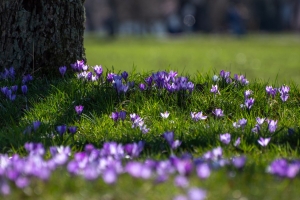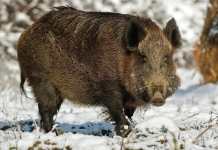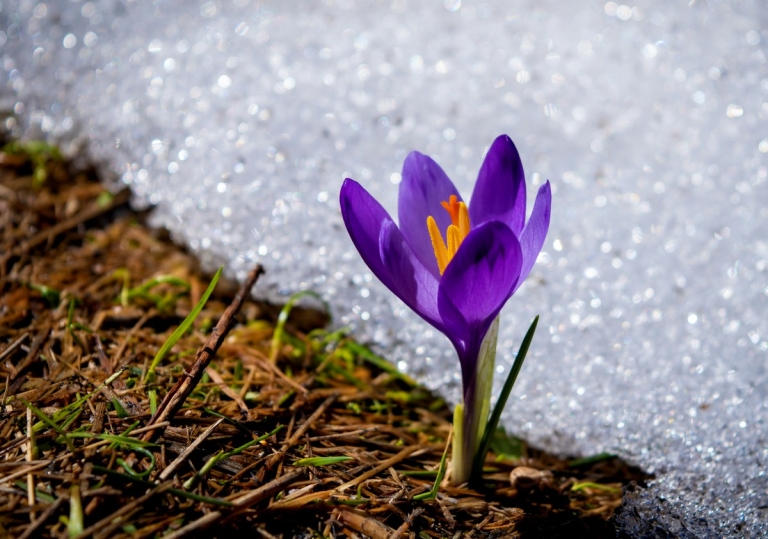FLAT TOP, W.Va. — There are few surer signs of the approach of spring in West Virginia than the emergence of crocus blossoms in the melting snow. Though familiar worldwide, some members of the genus Crocus are indigenous to Appalachia.
Crocus carolinianus, also known as the Carolina crocus or yellow crocus, and Crocus vernus, popularly known as the spring crocus or Dutch crocus, are two examples of species found in the Appalachian Mountains, including West Virginia.

The tiny, herbaceous perennial "Crocus carolinianus" is indigenous to the southeastern U.S., encompassing the southern Appalachian Mountains. It is frequently grown for its magnificent flowers and uses in gardens and landscaping. It boasts bright yellow, goblet-shaped flowers that bloom in the early spring.
The small, herbaceous perennial "Crocus vernus" is native to Europe, but it has been spread around the world. Early spring brings forth its goblet-shaped purple, white, or yellow flowers, and it is frequently planted for these attractive blooms and use in gardens and landscaping.
The genus Crocus belongs to the Iridaceae family of flowering plants. In Europe, Asia, and North Africa, there are approximately 80 different varieties of crocus that are found in woodlands, meadows, and other habitats.
Most Crocus species are small, perennial, herbaceous plants called "corms," which resemble subterranean bulbs. Their blooms and long, thin leaves often sprout from the ground simultaneously. The blooms are typically goblet-shaped and have three brilliantly colored sepals and petals.
Crocus in medicine
In the Victorian era, crocus was used to treat various ailments, including skin disease, respiratory issues, and digestive problems. The plant was believed to have aphrodisiac qualities and was used to manufacture perfumes and scented oils.
Saffron, a spice with a particular flavor and scent used in cooking, is made from the crocus plant. The female reproductive parts of the plant, called stigmas, are used to produce saffron. Saffron is one of the most costly spices in the world because it must be painstakingly hand-picked from the stigmas of the crocus plant's blossoms—a labor-intensive operation.
Saffron was thought to provide several health advantages throughout the Victorian era and was also included in several traditional treatments. It was occasionally used to treat various diseases, such as anxiety, depression, and premenstrual syndrome. It was believed to have antioxidant and anti-inflammatory qualities.
Saffron has a long history of use in cooking, and it is prized for its unique flavor and aroma. It is used in many traditional dishes from a variety of cuisines around the world, including Persian, Indian, Spanish, Italian, and French.
Crocus as a source of dye
Crocus has long been utilized as a source of dye. The plant yields a yellow pigment that has been used to color textiles and other materials for centuries, and it is still employed in some regions of the world today. Saffron is additionally employed as a natural dye for textiles and other things. In a procedure known as saffronizing, it is typically used to dye fabrics and other materials, giving them a yellow or orange hue.
Crocus in Irish mythology
Faeries are known to prefer crocus blossoms, and it is thought that if you put a bowl of milk out for them, they will thank you by converting it into a bowl of gold. The crocus is sometimes described as the faeries' flower and is viewed as a representation of their enchantment and mystique.
In other tales, the crocus is connected to the faeries more functionally because it is thought that the faeries employ this plant to treat various illnesses. These tales frequently show the faeries using the petals and stigmas of the crocus plant to create cures for ailments and wounds.
Sign up to receive a FREE copy of West Virginia Explorer Magazine in your email weekly. Sign me up!
































